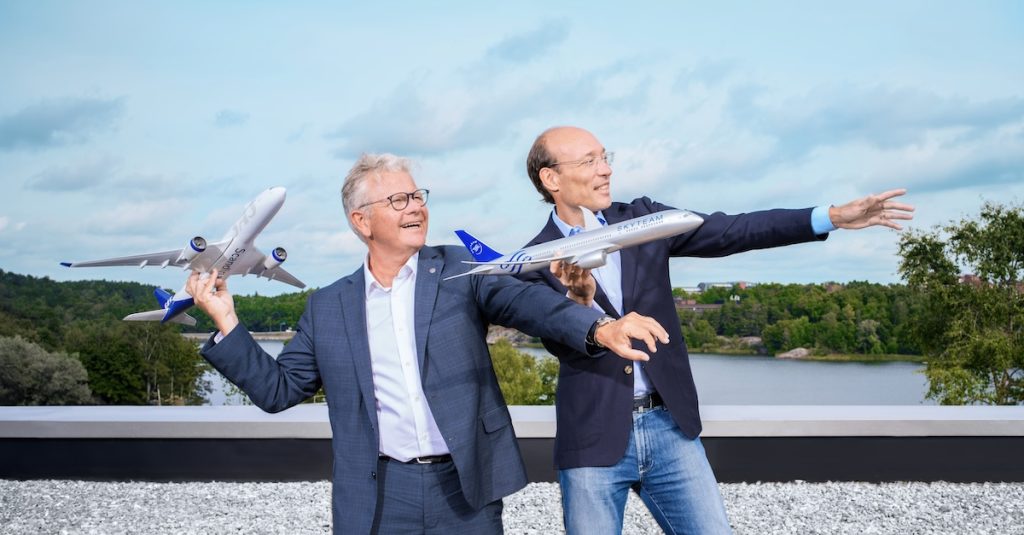SAS has officially transitioned to the SkyTeam global airline alliance, a move aligned with its post-bankruptcy recovery strategy.
Following a significant restructuring process, SAS’s integration into SkyTeam offers enhanced connectivity and new travel opportunities for its customers.
The Transition to SkyTeam
The strategic shift by SAS from the Star Alliance to SkyTeam marks a significant transition in the aviation sector. This move was catalysed by a $1.1 billion consortium bid led by SkyTeam founding member Air France-KLM, aiding SAS’s emergence from Chapter 11 bankruptcy. With this strategic alliance, SAS aims to leverage SkyTeam’s expansive network, enhancing connectivity for passengers globally.
SkyTeam’s chairman, Andres Conesa, expressed enthusiasm about welcoming SAS into the alliance, underscoring the airline’s commitment to providing seamless customer experiences. The partnership is anticipated to introduce new routes, facilitating travel across Africa, Latin America, and the Caribbean, thereby broadening SAS’s reach in these burgeoning markets.
Benefits for SAS Customers
With the collaboration, SAS customers are set to enjoy improved connectivity to over 1,000 destinations worldwide. This extension of service paves the way for enhanced travel experiences, as passengers will have access to diverse destinations that were previously less accessible.
SAS passengers, particularly those enrolled in the EuroBonus programme, will now have the ability to earn and redeem points across several SkyTeam airlines, broadening the spectrum of benefits. Gold and Diamond members will also enjoy access to SkyPriority services and lounges, significantly elevating their travel experience.
Strategic Advantage for SkyTeam
For SkyTeam, the inclusion of SAS strengthens its strategic positioning across key Nordic markets, especially with access to Scandinavia’s primary hubs in Copenhagen, Stockholm, and Oslo.
The addition of SAS enhances SkyTeam’s global footprint by becoming the only airline alliance serving both Ushuaia in Argentina and Svalbard in Norway. This unique positioning underscores SkyTeam’s comprehensive network reach, offering unprecedented geographic coverage and versatility for its customers. SAS’s inclusion is expected to bolster SkyTeam’s offerings, increasing its competitiveness in the global airline industry.
Strengthening ties with Scandinavian airports is a significant strategic benefit for SkyTeam, allowing the alliance to enhance geographical connectivity and intercontinental operations, a core objective for expanding in Northern Europe.
Comments from Industry Leaders
Anko van der Werff, the President and CEO of SAS, remarked on the alliance as “the beginning of a new era for SAS”, highlighting the potential for enhanced collaboration and network expansion. His optimism was shared by Patrick Roux, SkyTeam’s CEO, who reaffirmed the alliance’s commitment to delivering value and seamless experiences for customers through collective teamwork.
The synergy between SAS and SkyTeam is presented as a transformative opportunity for both parties, with shared values of customer focus and operational excellence. This collaborative approach aims to set new benchmarks in airline alliance efficiencies and customer service standards.
Industry sentiments reflect a positive outlook on SAS’s strategic manoeuvre, with expectations of robust passenger growth and network improvements as a result of the new alliance.
Impact on Global Airline Alliances
The integration of SAS into SkyTeam marks a departure from its longstanding affiliation with the Star Alliance, suggesting potential shifts and competitive dynamics in the global airline alliance landscape.
Star Alliance’s commitment to Scandinavia remains steadfast despite SAS’s defection, signalling the dynamic nature of aviation partnerships. SkyTeam’s strategic gain underscores the importance of adaptability and alignment in achieving long-term success.
The shift underscores a broader trend in the aviation industry where airlines seek strategic partnerships that best align with their evolving business objectives and market demands.
Future Prospects and Expectations
As SAS integrates deeper into the SkyTeam network, future collaborations are anticipated to evolve, potentially bringing enhanced operational synergies and shared initiatives focused on customer experience.
The success of SAS’s transition will likely be measured by its ability to capitalise on new market opportunities while maintaining and growing its existing customer base. This partnership could set the stage for similar moves in the industry, where airlines pivot alliances to adapt to changing market conditions.
SAS and SkyTeam are poised to explore and develop further joint ventures, leveraging mutual strengths to deliver improved service offerings, a critical step in redefining their competitive standing among global carriers.
In anticipation of its 25th anniversary, SkyTeam is likely to use this milestone as a platform to innovate and expand its network further, supported by SAS’s strategic contributions.
EuroBonus Member Enhancements
SAS’s EuroBonus members stand to benefit significantly from the transition, with new opportunities to access SkyTeam’s services and amenities.
Silver members of EuroBonus are now upgraded to SkyTeam Elite status, while Gold and Diamond members enjoy Elite Plus, offering a breadth of privileges.
These enhancements align with SAS’s promise of delivering elevated travel experiences, ensuring loyalty and satisfaction among its frequent flyers.
In conclusion, SAS’s strategic alignment with SkyTeam underscores a pivotal shift in airline alliances, promising expansive opportunities for customers.
The move not only reinforces SAS’s market position but also contributes to the dynamic evolution of global aviation partnerships.

